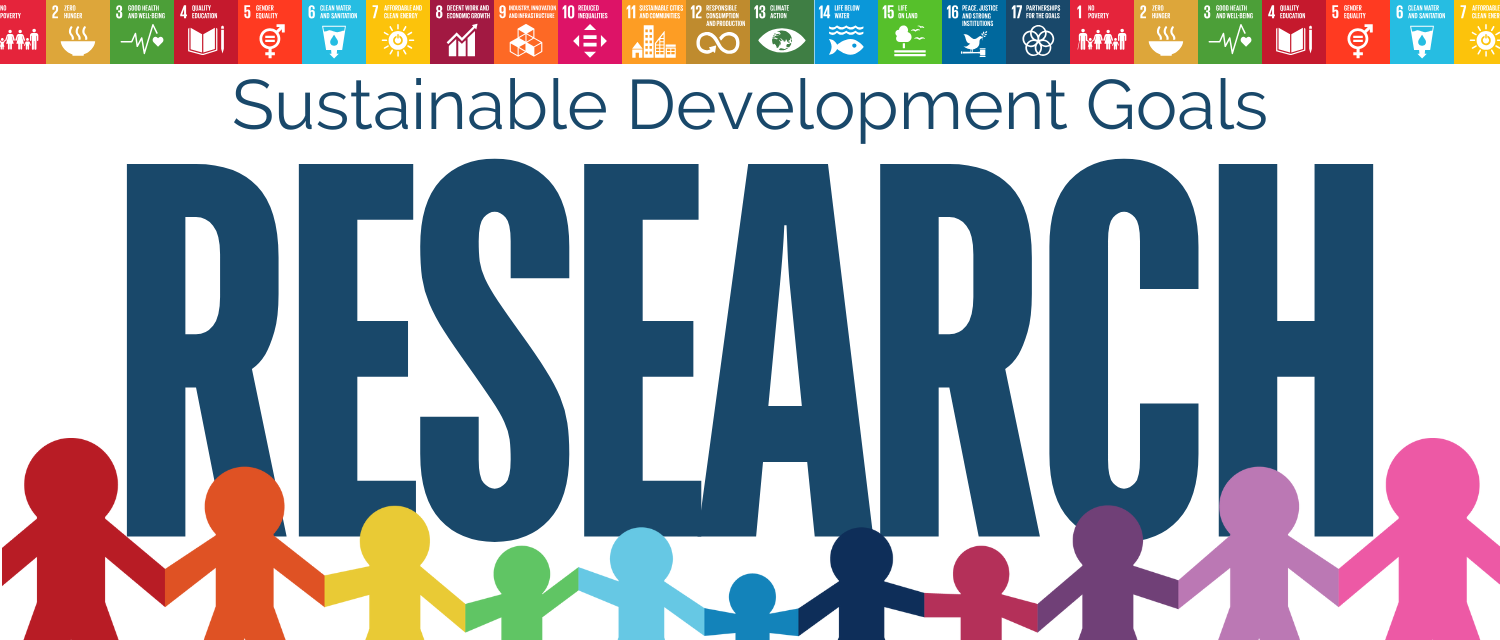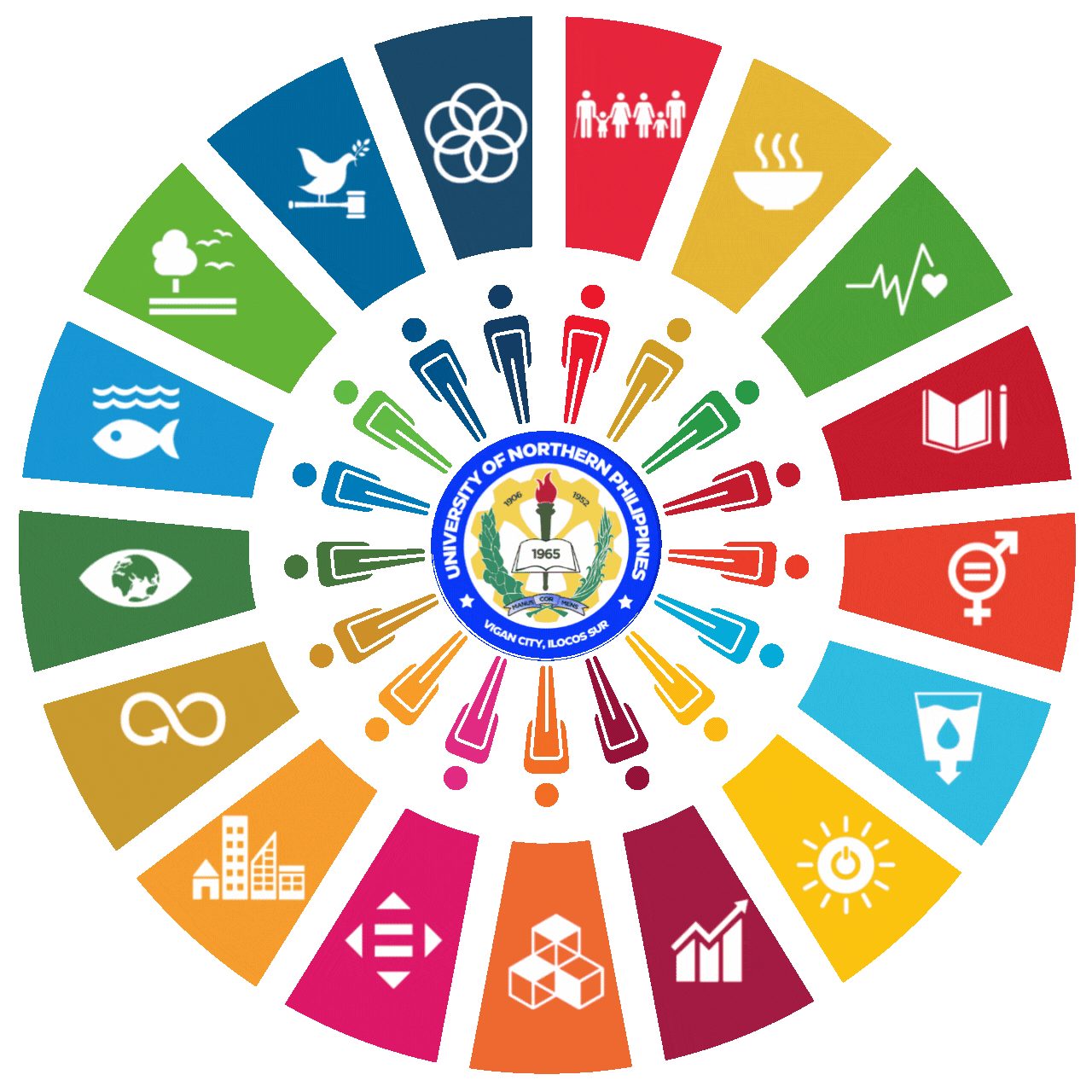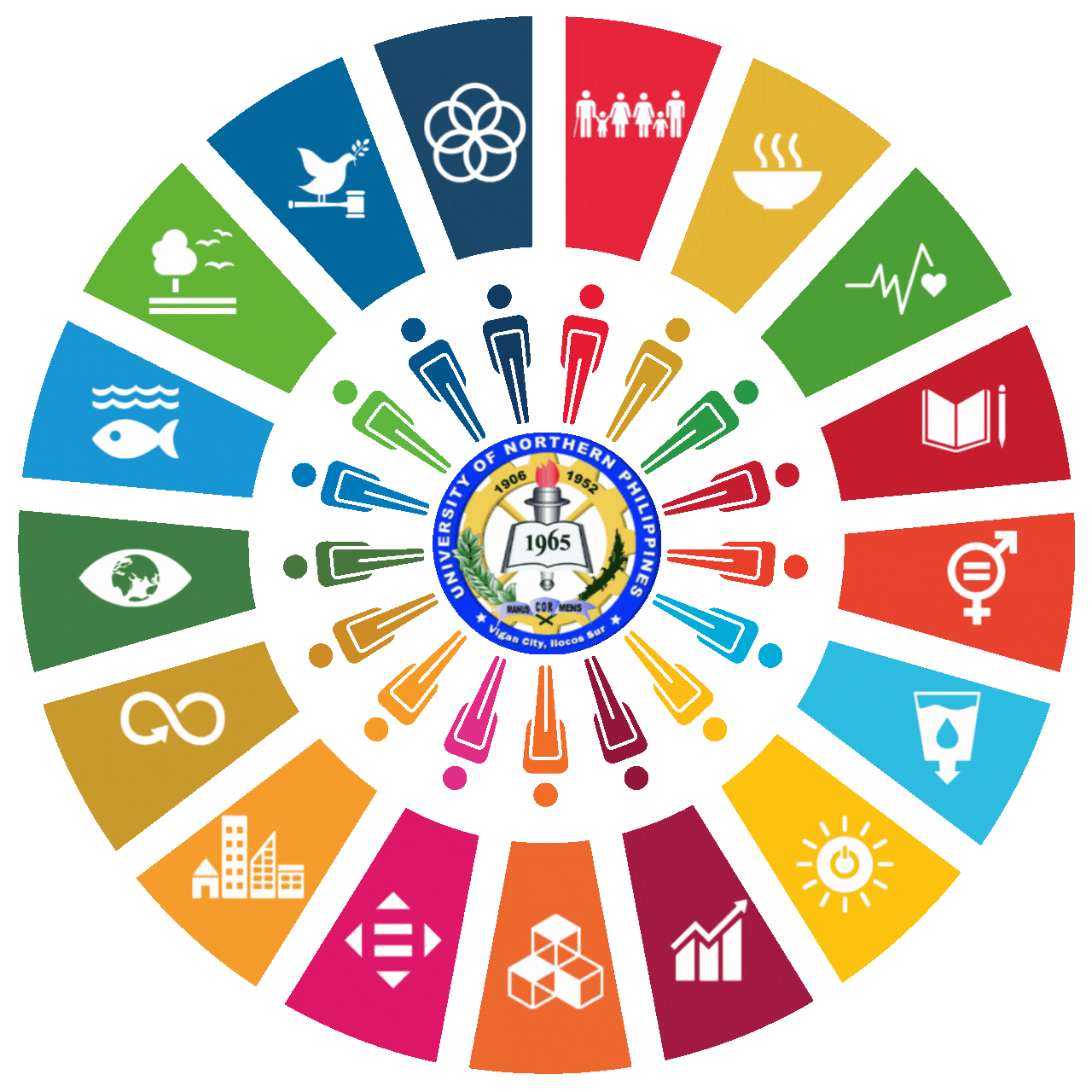

SDG 15 - LIFE ON LAND
The University of Northern Philippines (UNP) demonstrates a strong commitment to Sustainable Development Goal 15: Life on Land through a comprehensive approach that addresses ecosystem protection, biodiversity conservation, and sustainable land management.
Taxonomy of Insects in San Juan, Ilcoos Sur, Philippines
Proponents: KITZ A. ELECHO, JOSHUA A. BATARA, VIRGILIO B. GASCON, MARITESS R. RABOY, ALMA B. SEGISMUNDO, JESSY C. DOMINGO
Abstract
Considered the most diverse animal group on the planet, insects play significant roles in the production of essential seeds, fruits, and vegetables through pollination, decomposition of organic matter, control of populations of other organisms, and provision of food for other taxa, including humans. This study aimed to conduct a taxonomic study of insects in San Juan, Ilocos Sur, Philippines, and classify them as to order family, scientific name, common name, and species richness between the two study areas, Barbar and Immayos Sur. One hundred forty-one (141) adult insects were collected and taxonomically classified employing the latest classification schemes and identification keys from authoritative individuals and databases from credible websites, as well as catalogs, checklists, synopses, and other reliable published references. Of these 141 specimens, which the researchers purely identified, some still need to be adequately identified, including those fifty-six (56) species identified at the family level, sixty-five (65) valid genera, and thirty-two (32) species that were marked ‘INDET’ (indeterminable) but were identified at least at the family level or tribal
level. Twenty-four (24) species are suspected to be new, and a comparison of these with the collections in Natural History Museums is highly recommended for their verification. A tabulated classification of insects occurring in San Juan, Ilocos Sur is presented. In terms of species richness, there are more insect species in the forests and water ecosystems of Barbar than in Immayos Sur, San Juan, Ilocos Sur.
Keywords: species, order, scientific name, species richness
Touch Me Not: Mimosa Pudica (Makahiya): A Hermeneutic-Semiotic Phenomenology
Proponent: Lloyd A. Mata; Rizza P. Cajindos ; Germana Gloria V. Molina; Jonnel B. Torres; Magdalena T. Ebojo
Abstract
As Ilokanos call this herb and sometimes consider it an ornamental plant, Bain-bain has many uses. It has moved from its use as a fence to the center of Ilocanos’ life, literally around which revolves their social, cultural, and economic activities. This hermeneutic phenomenological study aimed to examine the lived experiences of the Ilocanos on the Mimosa pudica (makahiya). The study focused on Ilocanos’ practices, beliefs, a deeper understanding of the plants, and their medicinal value. This study delves further into the symbolical interpretation, the more substantial effect on sociocultural development, the cultural knowledge on the sensitivity of the makahiya leaves, and the significant contributions to the teaching-learning process to preserve culture and identity. A total of 15 respondents/informants participated in the survey. Additional information was obtained from personal interviews with the members of the community, who are the most knowledgeable elders. Results revealed that Ilocano treats illnesses like ulcers, skin problems, and inflamed liver. It is also used as an antioxidant to replenish the loss of nutrients due to diarrhea. Moreover, the makahiya plant is used for medicinal purposes and is associated with different emotions or parts of life. It was deemed that makahiya was an emblem of femineity and freedom.
Keywords: Mimosa pudica, hermeneutic, semiotic, lived experiences, Ilokano practices, and beliefs.
Assessment of the Diversity of Macrofauna of Govantes River in Vigan City, Ilocos Sur
Proponent: Charo B. Rojas
Abstract
Macrofauna play a key role in the functioning of riverine ecosystems. However, knowledge about the diversity and functional structure of freshwater macrofauna is limited. This study assessed the macrofauna of Govantes River in Vigan City, to identify the observed species using morphological evidences, and to investigate its abundance and composition, and species diversity. A total of 20 species of macrofauna were found and identified within the Fish Aggregating Device (FAD) in the different stations. These species belong to Ichthyo Fauna (13 species), Crustacea (6 species), and Gastropods (1 species). All the diversity indices H’, J’ and exp (H’) and Ho corresponding to diversity, evenness and
richness respectively, are all statistically the same. This result implies that all the sampling stations have the same diversity, evenness and richness, based on the observed number of individuals of the species found. The dominant species found was Karalla daura in Station 1.
Keywords: abundance, evenness, dominance, ichthyo fauna, crustacea, gastropods
Evaluation of Coral Reef Health Status of the Fish Sanctuary of San Esteban, Ilocos Sur
Proponents: Jericho A. Mendoza1, Ash Lee R. Verzosa2, Antonio N. Ayop3
Abstract
Studies on corals are lacking in Ilocos Sur’s marine protected areas (MPAs), hindering management effort development. This study evaluated the health status of coral reefs in the San Esteban Fish Sanctuary. Hard coral cover, hard coral diversity in terms of Taxonomic Amalgamation Units (TAUs), and coral reef health status in terms of live coral coverage, algae coverage, sand coverage, and coral mortality index were measured in two sampling stations inside an over-a-decade-old fish sanctuary that does not have previous data on its coral reef health status. The Underwater Photo Transect (UPT) method was employed to take image samples subjected to the Coral Point Count with Excel extensions (CPCe) software for analysis.
The study revealed that the coral reef in San Esteban Fish Sanctuary is in good condition with a hard coral cover of 30.0%, falls under Hard Coral Cover Category C, and a hard coral diversity of 16.8TAUs that falls under Diversity Category D. The fish sanctuary is also in a healthy condition based on excellent live coral coverage, algae coverage, sand coverage, and low coral mortality index. The two stations are more or less the same in terms of the aforementioned parameters. Overall, it is recommended to continuously strengthen the enforcement of the fish sanctuary to protect its coral reefs, measure other parameters that might impact and indicate coral reef health status, employ evaluations inside and outside MPAs in the province, and use high-resolution cameras during image sampling for more efficient analysis.
Keywords: Coral cover, coral reef diversity, coral health status, marine protected areas, Ilocos Sur


















